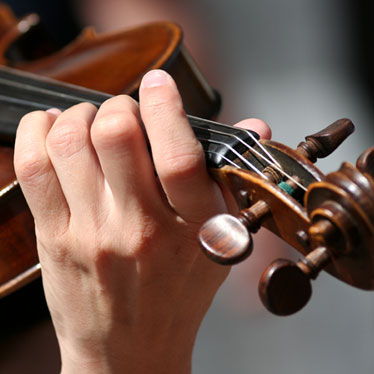What Is Shifting And How To Master It

When you’re learning to play the violin, or any string instrument, shifting is an important concept to master. While many beginner students work on first position placement, moving on in your training means developing shifting skills that allow you to extend your performance abilities.
For string musicians, mastering shifts is essential for gaining a higher level of proficiency. Knowing exactly what shifting is and how to master it without a huge amount of strain can help you meet your progress goals faster.
What Is Shifting?
The concept of hand placement (positions) on the fingerboard extends your note range. Sheet music for beginner students is generally written in first position, which means that your hand is located closest to the scroll on your instrument. Shifting is the term used to describe the movement of your hand up and down the length of the fingerboard.
It helps some beginners to think about their left hand as an elevator. First position is like the first floor of a building and your hand can travel up the fingerboard to the next floor. Advancing students learn third position next because the majority of music is played there, and fifth position is typically learned after third. The hand moves up to gain higher notes. Eighth position is the furthest stretch, and generally artists at that point simply choose the most effective movement for their own needs.
The problem most students face when learning to shift is how to unerringly recognize where to land their “elevator” hand, especially when shifting down.
How to Master Shifting Like a Pro
First, you need to focus on a few basic elements. There are some simple techniques that will make shifting easier to master. The following hints will help make the learning process a little smoother.
- Correct Form—The way you hold your violin on your shoulder will have a big influence on how difficult it will be to learn shifting. Make sure that your instrument is balanced properly, and that your posture is correct. These basics are essential for mastering shifts.
- Thumb Placement—Look at the way your hand is shaped when in first position. Notice the upright position of your thumb. Now without worrying too much about accuracy, move your hand to the third position. Did your thumb turn horizontally? That’s not right and you’ll need to do some exercises to correct it.
- Work From Your Elbow—Shifting should be done from the elbow, not the forearm or hand. Your elbow should initiate the move so that your hand follows. If you try to originate the shift using your wrist, you’ll never achieve mastery.
- Trust Your Senses—Your brain is a marvel of intelligence. It automatically makes thousands of calculations when running or reaching for a door knob. You instinctively understand spatial concepts, which is basically being able to comprehend where an object is in relation to another object. It’s called proprioception. Use it to measure the distance between two notes; it will help you recognize placement position easier for better accuracy.
- Keep your Knuckles Up—Don’t let your left hand fingers curl over the fingerboard when shifting, but ensure that the finger playing the note keeps contact with the string (not the fingerboard).
A Few Helpful Exercises
One of the best ways to practice shifting is to start from the first position and move to the third using your first finger. Remember, when you shift to third position, your thumb will move where the third finger was located in first position.
Try this: Play any half or whole note with your first finger in first position, then make your shift. Stop and look at your thumb and whether you’ve moved to the right position and if your thumb is straight. Do this five times with each finger, shifting back and forth.
Also, consider how you bow during shifts. If you hit bumps (the bow jumps exactly when you shift), you can apply a little more speed and pressure to compensate.
One of the best ways to master shifting is to use visualization. Remember the elevator analogy and your innate ability to recognize spatial relations? Those skills can be enhanced through deliberate visualization techniques. Look closely at your instrument’s fingerboard while playing scales. Make mental connections with your finger placement and the distance between steps and half steps. Also memorize where your third finger is located. That’s where your thumb will move to when shifting to third position.
Shifting abilities, like all aspects of learning to play a string instrument, take time to develop. However, you can ensure that you don’t cultivate bad habits that make the process more difficult by focusing on your form, finger placement and elbow movements.


